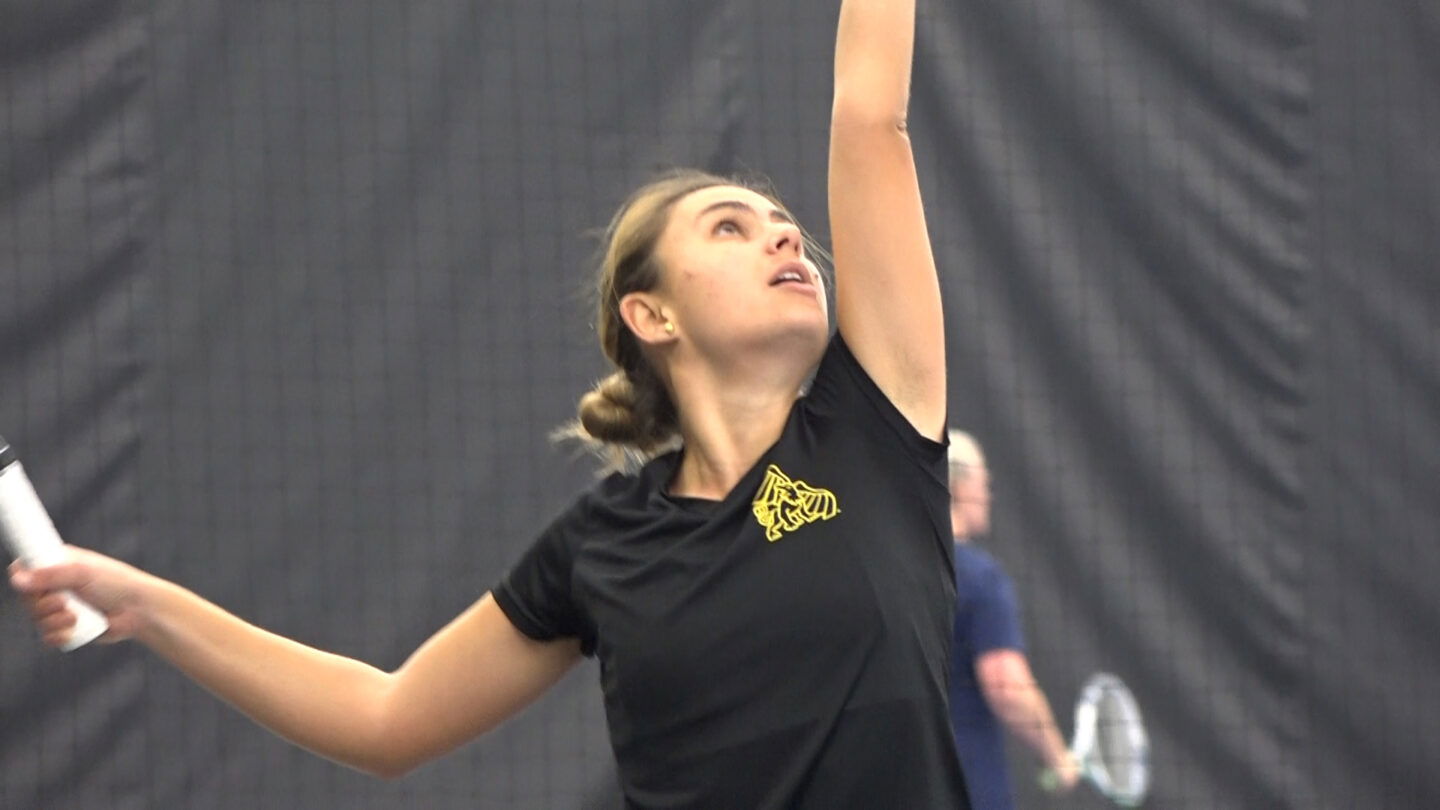Sports serve as a universal language as more International student-athletes come to America

By Kyle Schmidt
While people have long come to the United States from other countries in search of opportunity, in the last 25 years many are arriving seeking another type of shot — the chance to play sports at the collegiate level.
In 2000, just 6,000 international student-athletes participated in NCAA sports across all three of its divisions. Today, that number has grown fourfold to 25,000.
It’s a trend that’s being seen right here in St. Joseph. Ashton Feldhaus, head women’s basketball coach at Missouri Western State University, has brought in five international players since joining the program earlier this year.
“Once I signed two or three, I was like, I might as well go ahead and get the rest international because it does help when you’re saying ‘Hey you’re not the only one,’” Feldhaus said. “They’re all over here, all going through the same things and then having each other.”
Feldhaus came to Missouri Western from Eckerd College in Florida, which recruits mostly internationally, and she said it made sense to do the same here. Having pipelines in Europe already made the task easier for Feldhaus.
One player she found it easy to convince to make the move to America was Jessica Ford. Ford, who is from England, played under Feldhaus at Eckerd and followed her to Western as her first international transfer.
“Sport is such a big deal over here, which is why I wanted to initially come over here,” Ford said. “The facilities are great and I would say for colleges and universities much better than they are in England.”
Another player Feldhaus brought over is Marie Sepp from Tallinn, Estonia. She played on the national team in her home country and said it’s been a goal of hers to play and study in America.
“I wanted to get my degree so I feel like that was really important to me,” Sepp said. “It’s important for me to get my degree and play basketball at the same time.”
Sepp is now a junior and played her first two years at the University of Albany. Coming from a country where three-on-three basketball is played, it was quite the adjustment when she first started.
“You can foul a lot (in three-on-three) … I have always been the aggressive player to like take a foul, and back home they say fouls are good, like at least you fouled someone,” Sepp said. “Here, it’s like, you get two fouls you are going to sit on the bench because they can’t afford to lose you.”
She also finds players get called for travels more in America. Both Sepp and Ford described basketball at home as more IQ-based while isolation plays are big in America.
Matilda Soderlund also transferred to Western to play after starting her college career at Morehead State. The Swedish native thought back to when she first got to America.
“The beginning was hard because of the language barrier, you feel like an outsider kind of,” Soderlund said. “But when you get used to their language and got comfortable I have not had a problem with it.”
The importance of having other international students around to relate to was a common theme among the three.
Being able to lean on others who are in the same situation of being away from home and loved ones helps no matter the sport involved, players said.
The tennis team at Missouri Western is made up of all but two international players. Head coach Alejandro de la Torre knows from first-hand experience what it is like to come to America and play in college.
“I was a college player too, I was in the exact same spot and I understand what they are going through,” de la Torre said. “I think we feed off each other in that aspect.”
Originally from Madrid, Spain, he brought over a few others from his home country, including junior Christina Granero and freshman Elena Rey.
Granero said she has learned a lot about playing as a team since being here. In America, the game for her is more physically demanding as opposed to being more technical in Spain. Outside of tennis, a few other challenges have popped up for Granero.
“Creating your own family here because you are not living with your family anymore,” she said. “Also studies, studying a different language can be challenging.”
Rey came to Western in August and is still learning to adapt to a new culture and language. Not being around family is the hardest part for her, but she said she has seen many positives since coming to the U.S.
“It’s good for America too because then you have another perspective,” Rey said. “I have a lot of friends here now and they ask me everything about Spain and if it’s like the movies and everything.”
De la Torre also spoke about the benefits of having different perspectives.
“It’s not about my point of view versus your point of view but learning from each other,” he said. “They don’t have anyone here and they get a whole new family once they get here.”
Raising the skill gap is another positive coming from putting international players in the mix.
Tom Smith, a Hall of Fame men’s basketball coach who was part of the Missouri Western program for 25 years, only coached two international players during his tenure but points out the pieces of the game they bring.
“There’s a lot more pressure on the IQ part of it,” Smith said. “Learning to play off of two feet is learning to pivot, learning to protect the ball, learning the proper technique. Their 6’9’’ guys in Europe could shoot and dribble. All our 6’9’’ guys were either under the basket or they didn’t play.”
An opportunity to raise the skill level and create more of an understanding among individuals who were once thousands of miles away and complete strangers is just the tip of the iceberg for the benefits international student-athletes bring, Smith said. He pointed to another key benefit.
“I’ve always felt athletics is a great barrier to so many of the problems, racism and some of the things that we have in the United States,” Smith said.

